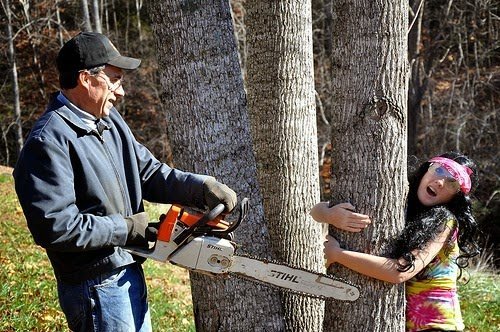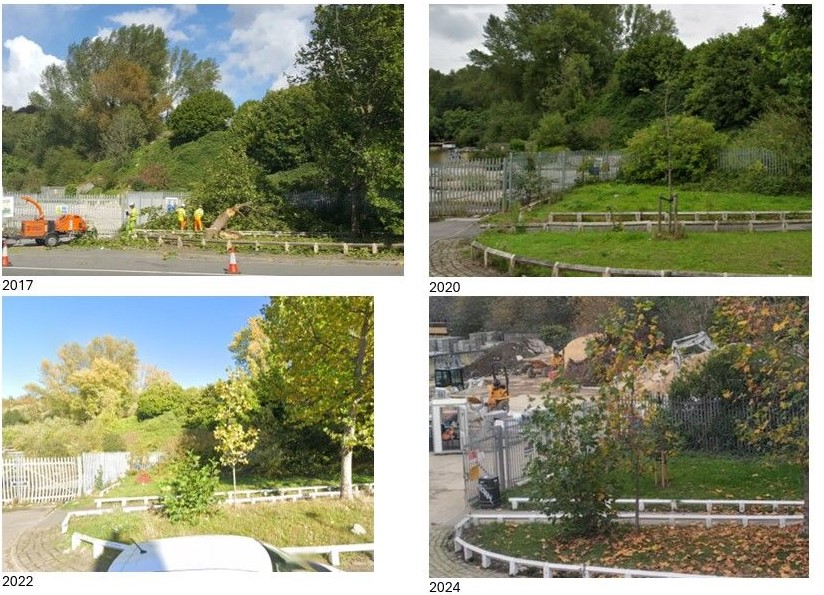
Charlotte Mew on Men and Trees
12th November 2014
I like trees, but…
30th January 2015The World’s First Tree Preservation Order
At the turn of the 20th century, in the face of overcrowded slums and uncontrolled urban growth, the UK Government implemented some of the first ever campaigns to tackle the problem of poor urban environments. This political commitment ultimately led to the creation of the 1947 Town & Country Planning Act, which brought most development under the control of councils, through a system of development plans. This Act also protected certain trees, by means of Tree Preservation Orders (TPOs), with private tree owners now having to seek formal permission from the newly appointed authorities to fell, lop or top their own trees.
The TPO system is regarded as one of the oldest formal tree protection systems in the world, and is one of the few with the prospect of criminal proceedings against those who transgress it. Since 1947 the impact of this system on our urban trees has been wide reaching. Almost 70 years on from when our first Tree Preservation Orders were confirmed, the UK is a very different place, yet urban trees still face many pressures, and it remains a powerful legal mechanism for delivering tree protection.
It would, however, be a mistake to think that the UK’s TPOs were the first written documents that protected trees by the use of Law. In fact, one has to travel back over 2000 years, to 92/91 B.C in Ancient Greece, to find the world’s first Tree Preservation Order. Customarily engraved on a heavy stone tablet, the document details specific laws in relation to tree protection and the regulation of tree cutting:
περὶ τῶν κοπτόντων ἐν τῶι ἱερῶι. μηθεὶς κοπτέτω ἐκ τοῦ ἱεροῦ τόπου· ἂν δέ τις ἁλῶι, ὁ μὲν δοῦλος μαστιγούσθω ὑπὸ τῶν ἱερῶν, ὁ δὲ ἐλεύθερος ἀποτεισάτω, ὅσον κα οἱ ἱεροὶ ἐπικρίνωντι· ὁ δὲ ἐπιτυχὼν ἀγέτω αὐτοὺς ἐπὶ τοὺς ἱεροὺς καὶ λαμβανέτω τὸ ἥμισυ.
About Those Cutting Wood in the Sanctuary: No one shall cut wood from the sacred place. If anyone is caught cutting wood, a slave must be flogged by the sacred men, but a free man must be fined as much as the sacred men decide. The one catching transgressors must bring them to the sacred men and will receive half the fine.
While it is possible other written regulations relating to damaging or felling certain trees existed; these usually formed a small part of the texts alongside other rules. This was the first text to concentrate exclusively on the protection of trees, issued in an attempt to make the prohibition against the destruction of the trees more widely known, and it gives specific details concerning the punishment of those who transgress the rules.
Although separated by two millennia, the tree protection mechanisms share similarities. In the 1940s, our Tree Preservation system was created as a means to offer practical protection to trees under pressure from new housing, roads and industrial development. In Ancient Greece, sacred trees were also under pressure – wide-ranging deforestation around this time meant that the destruction of sacred trees, for fire-wood and grazing, was a real problem. The sanctuaries’ required their own firewood for sacrificial rituals and so this was likely one of the main reasons why the trees were so rigorously protected.
Similarly, the implementation of the TPO regulations in the 1940s reflected a wider cultural shift, of both the growing belief in the link between public health and urban trees, and the protection of important trees was seen by many as a moral duty in and of itself. In Ancient Greece, special trees enjoyed specific legal protection both as a practical means to manage a shortage of wood, but it also reflected the wider culture, where tree veneration and the belief in the sanctity of trees was prominent.
Similarly, the implementation of the TPO regulations in the 1940s reflected a wider cultural shift, of both the growing belief in the link between public health and urban trees, and the protection of important trees was seen by many as a moral duty in and of itself. In Ancient Greece, special trees enjoyed specific legal protection both as a practical means to manage a shortage of wood, but it also reflected the wider culture, where tree veneration and the belief in the sanctity of trees was prominent.





